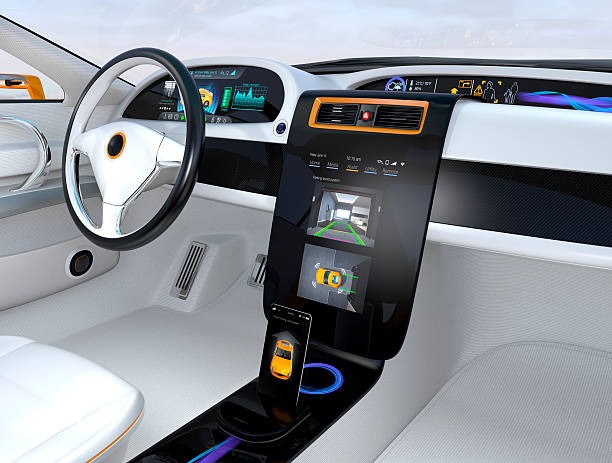Key Takeaways:
- Intelligent vehicle systems are reshaping the automotive landscape.
- Key technologies include advanced driver-assistance systems (ADAS), connectivity features, and electric vehicle innovations.
- Understanding the role of automotive electronics helps consumers make informed purchasing decisions.
Introduction
The automotive industry is experiencing a remarkable transformation driven by the rapid advancement of technology. Gone are the days when vehicles were merely mechanical contraptions; they have evolved into sophisticated smart devices on wheels. At the heart of this evolution lies the integration of cutting-edge automotive electronics, which significantly enhance safety, efficiency, and comfort. These developments are reshaping traditional vehicles and opening up a world of possibilities for EVs, heralding a new era in transportation.
As automakers race to incorporate these advanced electronics into their models, consumers benefit from many features that once belonged solely to science fiction. This transformation underscores the immense importance of understanding electronics’ pivotal role in modern vehicles, improving functionality, and ensuring top-notch safety measures.
Advancements in Driver-Assistance Systems
Advanced Driver-Assistance Systems (ADAS) are at the forefront of automotive innovation, designed to make driving safer and more enjoyable. ADAS includes various technologies, such as adaptive cruise control that automatically modifies the vehicle’s speed to keep a safe driving distance, and lane-keeping assist, which gently directs the car back into its lane if it starts to veer off course. Moreover, emergency braking systems can detect potential collisions and brake autonomously to prevent accidents. These systems have been instrumental in reducing the incidence of road accidents. According to NHTSA’s research on ADAS safety, vehicles equipped with such technologies experience fewer collisions, translating to fewer injuries and fatalities on the road. Integrating ADAS into vehicles enhances safety and bolsters driver confidence, making it a crucial component of modern automotive electronics.
Connectivity Features Enhancing User Experience
The Internet of Things is transforming cars into devices that are as smart as they are functional. Today’s vehicles come equipped with high-tech connectivity systems offering services that enhance the overall driving experience. From real-time navigation, which provides the latest traffic updates and route suggestions, to remote diagnostics, which allow the vehicle to communicate maintenance needs before they become serious issues, these features redefine modern mobility. This wave of connectivity has enabled a more interactive driving experience. Infotainment systems now seamlessly integrate smartphones, offering drivers and passengers access to music, podcasts, and virtual assistants. Leading manufacturers constantly improve these systems, ensuring their vehicles provide cutting-edge functionality that meets consumer expectations.
Electric Vehicles and Their Electronics
Electric vehicles are spearheading a new era in the automotive sector, significantly bolstered by advancements in electronics. Key components like battery management systems ensure EVs run efficiently by monitoring battery health and usage to optimize power consumption. Additionally, power electronics facilitate the conversion and control of electric power within the vehicle, allowing for smooth acceleration and efficient energy use. The advancements in these electronic components have led to a rise in EVs. This surge is attributed to improvements in vehicle range, reduced charging times, and increased overall performance. With an ever-expanding charging infrastructure, EVs are becoming a more practical and environmentally friendly option for consumers worldwide.
Challenges Facing Automotive Electronics
Despite the numerous advantages offered by automotive electronics, several challenges persist. Cybersecurity remains a significant concern, with vehicles becoming increasingly susceptible to hacking as they become more connected. Ensuring robust security measures is critical to maintaining user safety and trust. Additionally, the development costs of advanced electronics are often high, posing financial challenges for manufacturers attempting to keep vehicle costs competitive.
Integration issues also present hurdles, as the complexity of modern vehicles can lead to difficulties in harmonizing various electronic systems. Manufacturers are actively addressing these challenges through ongoing research and development, ensuring that the benefits of electronic advancements can be fully realized without compromising safety or functionality.
The Role of AI and Machine Learning
Artificial Intelligence (AI) and Machine Learning (ML) are pivotal in the evolution of automotive electronics. These technologies enable vehicles to offer personalized driving experiences, such as predictive maintenance alerts that notify drivers of potential issues before they occur. AI can also analyze driver behavior, providing suggestions for improving fuel efficiency or safety. Furthermore, these technologies are essential for the development of autonomous vehicles. Through the real-time processing of extensive data, AI-driven systems can make decisions that mimic human judgment, such as navigating traffic or recognizing obstacles. As AI and ML technologies advance, they promise to make autonomous driving a practical reality shortly.
Sustainability and Automotive Electronics
Innovative technologies strive to minimize vehicles’ environmental impact, from energy-efficient systems that reduce fuel consumption to using sustainable materials in electronic components. Hybrid vehicles, which balance internal combustion engines and electric power, are a prime example of how electronics contribute to a more sustainable automotive industry. Efforts are also being made to improve the recyclability of electronic components, further lessening the environmental footprint of automotive manufacturing. These initiatives illustrate the industry’s commitment to aligning technological advancements with ecological sustainability goals.
What’s Next for Automotive Electronics?
The future of automotive electronics promises exciting developments, with trends indicating even deeper technology integration into vehicles. Self-driving cars, once a vision of the future, are now approaching reality due to swift progress in AI and connectivity. These vehicles are anticipated to significantly change transportation, providing a degree of convenience and efficiency never seen before and previously unimaginable.
Additionally, enhancing connectivity features will continue to facilitate a seamless, personalized driving experience. As these technologies evolve, vehicles will increasingly adapt to the needs of their users, becoming more intelligent and autonomous. This ongoing innovation foretells a transportation future where technology and cars become more intertwined, promising an era of unprecedented advancements in safety, efficiency, and sustainability.



